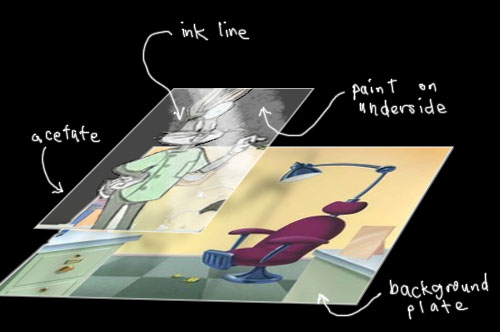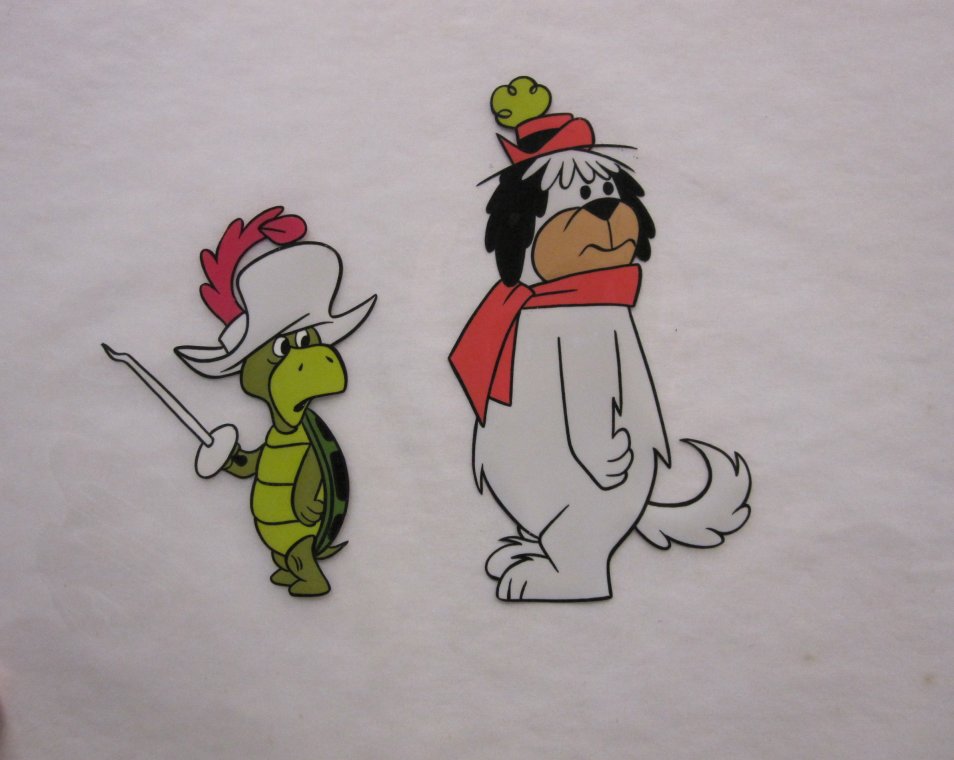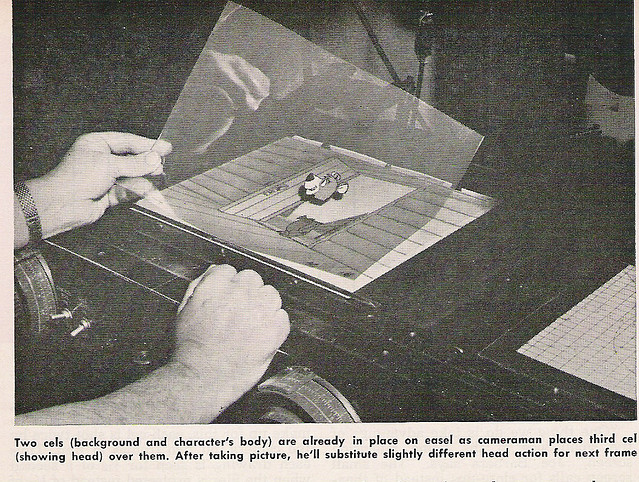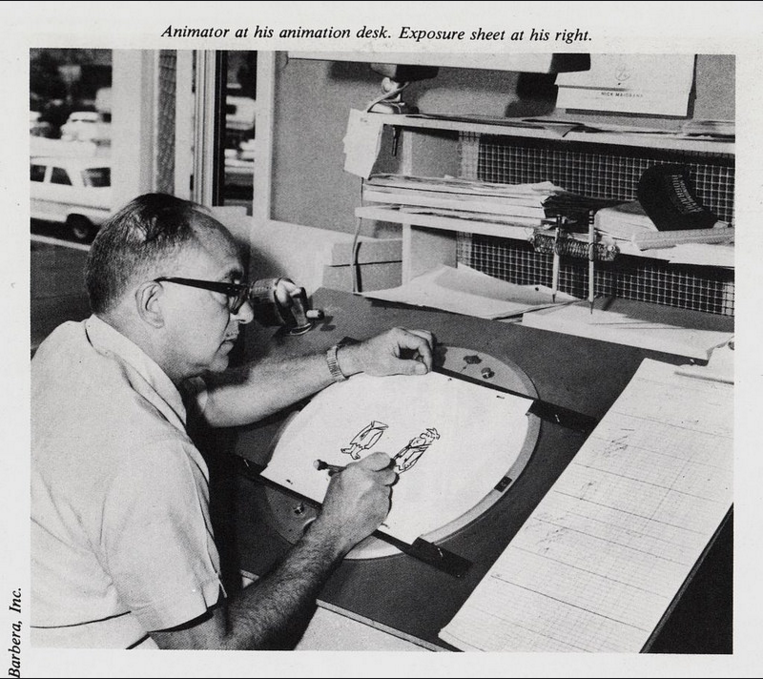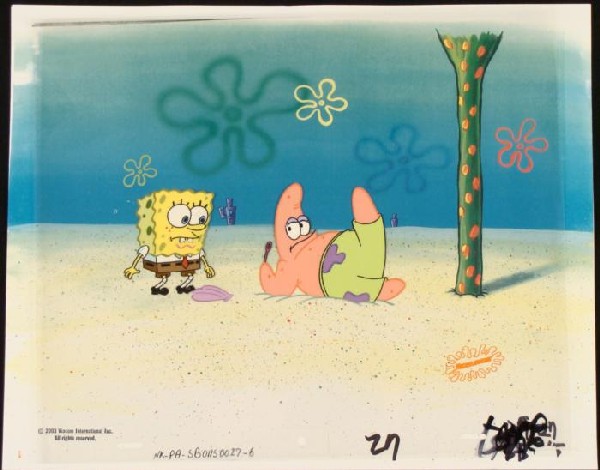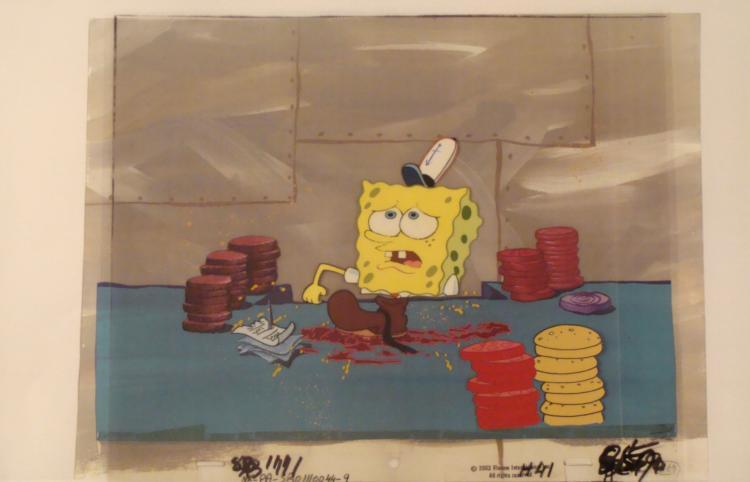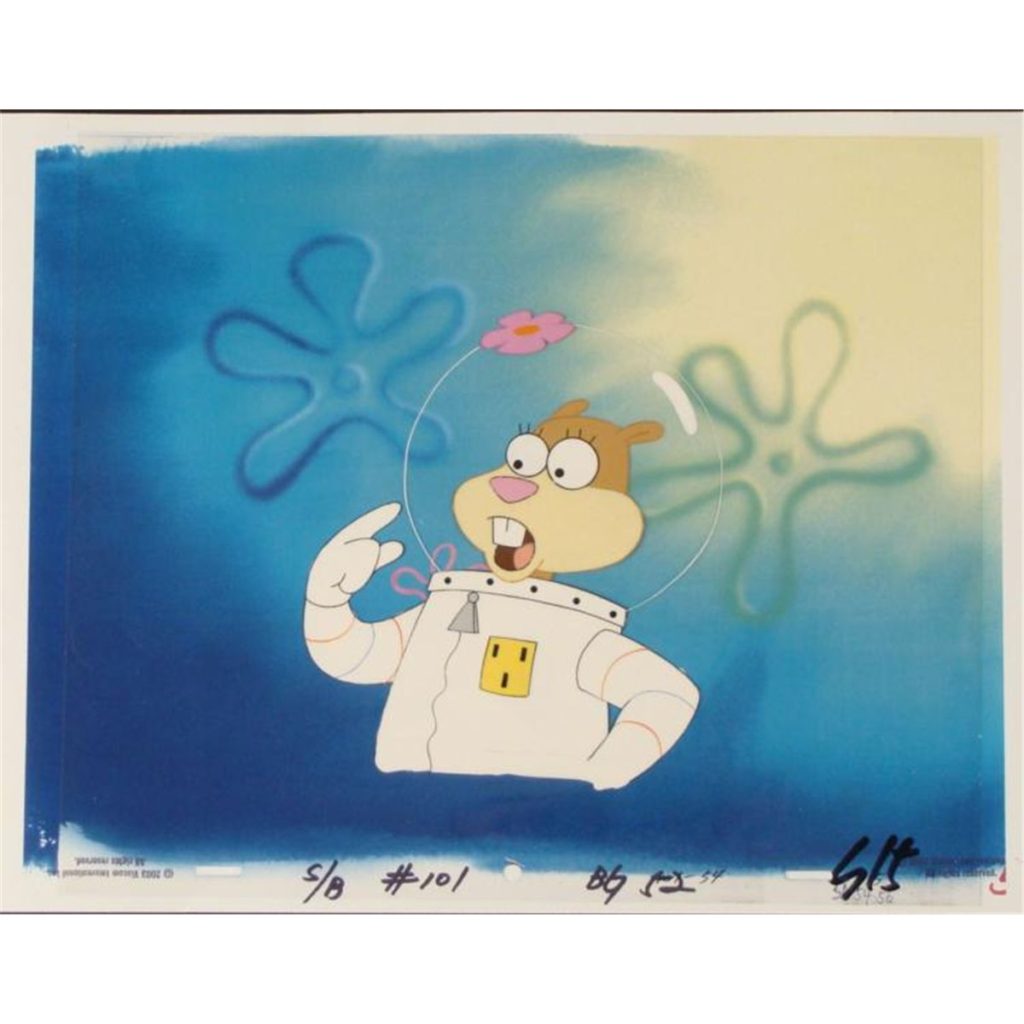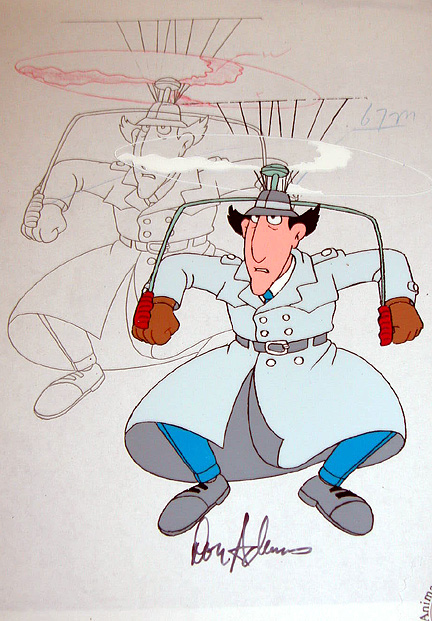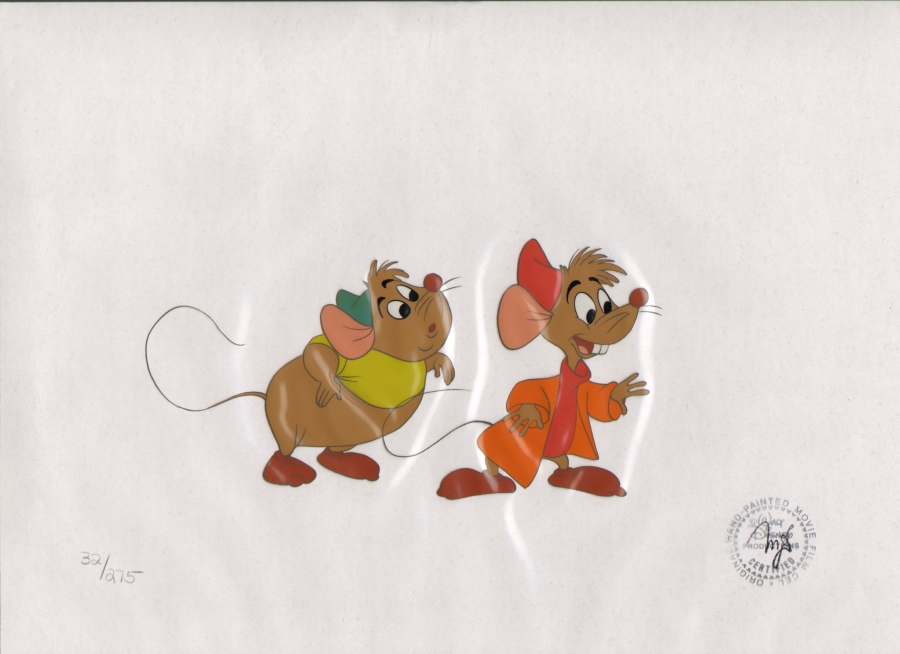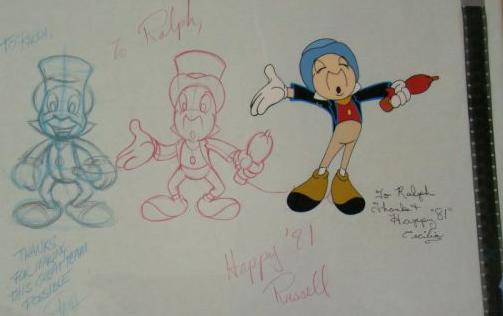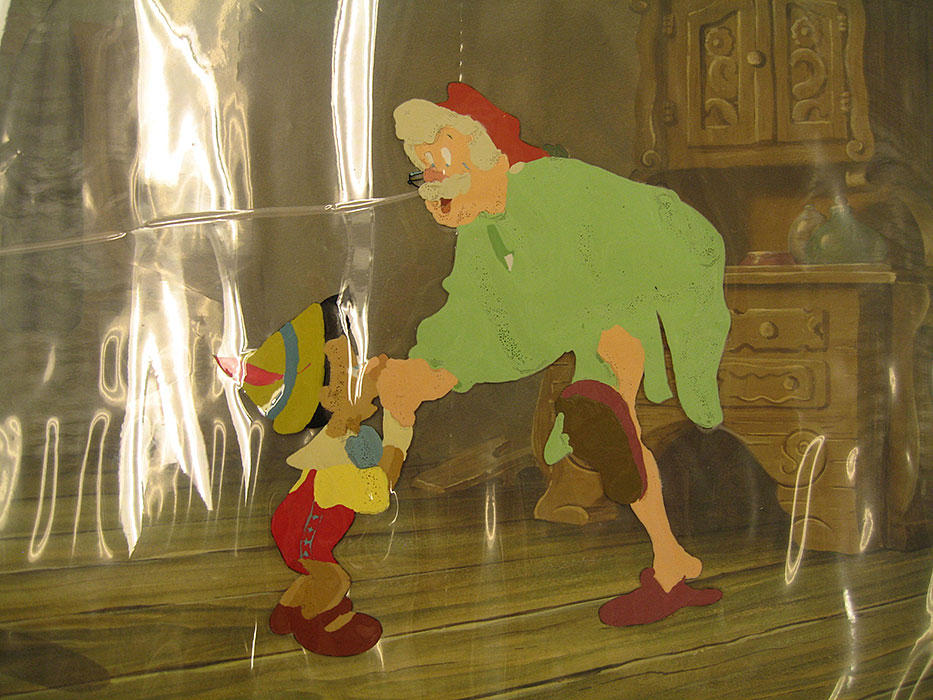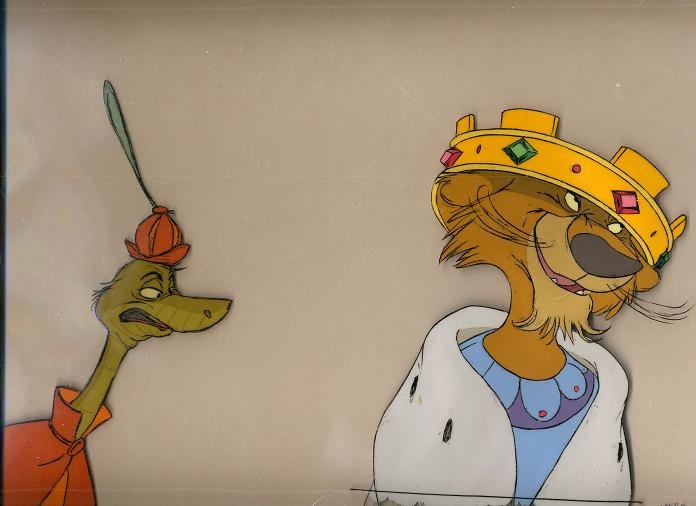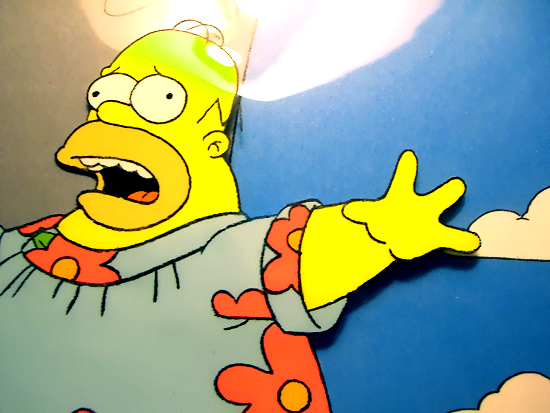A cel, short for celluloid, is a transparent sheet on which objects are drawn or painted for traditional, hand-drawn animation. Actual celluloid (consisting of cellulose nitrate and camphor) was used during the first half of the 20th century, but since it was flammable and dimensionally unstable it was largely replaced by cellulose acetate.
Generally, the characters are drawn on cels and laid over a static background drawing. This reduces the number of times an image has to be redrawn and enables studios to split up the production process to different specialised teams. Using this assembly line way to animate has made it possible to produce films much more cost-effectively. The invention of the technique is generally attributed to Earl Hurd, who patented the process in 1914. The outline of the images are drawn on the front of the cel while colors are painted on the back to eliminate brushstrokes. Traditionally, the outlines were hand-inked but since the 1960s they are almost exclusively xerographed on. Another important breakthrough in cel animation was the development of the Animation Photo Transfer Process, first seen in The Black Cauldron, released in 1985.
Lesson Goal: Create a painted background and an acetate foreground with your character inked on the front and painted on the back.
Target 1:Develop a character and a setting in rough form
Target 2:Create the painting for your background.
Target 3:Draw your character on tracing paper over top of your background
Target 4:Trace your character onto acetate and color them in on the backside with paint.
